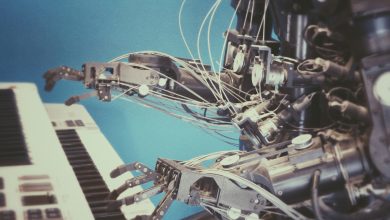
As 2023 gets underway, it’s time once again to reflect on how the trends of the past year evolved, what are the big topics at the moment, and what’s just around the corner.
Privileged access management will be essential
Security has always been an issue and always will be. However, in 2022 we did not see a headline-grabbing hack like the Sunburst attack on Solarwinds in 2020 or the ransomware attack on Kaseya in 2021. In other words, security is still one of the central issues in IT, but not a trend.
If we’re talking about trends in security, then Privileged Access Management (PAM) seems to be a hot topic: this is primarily about protecting privileged access rights, i.e., administrators and “super users” who require extended access to systems and applications. In this case, it is usually not enough to assign appropriate roles and provide them with passwords. Advanced security measures must be taken, such as monitoring user behaviour, secure password generation, rotation and updates, or separation of users and passwords, so that the entire system is not exposed to uncontrolled access even in the event of successful phishing attacks. An important requirement for modern PAM systems is to ensure secure access without creating unnecessary hurdles and impairing processes.
IT monitoring plays a dual role in PAM: On the one hand, monitoring tools need access to many critical areas, which means that a comprehensive PAM concept must also include monitoring tools. On the other hand, monitoring can complement and supervise PAM solutions by detecting unusual behavior in the network, but also by integrating the functioning of the PAM solution into the monitoring in a very concrete way. The prerequisite for this is appropriate interfaces on both sides, for both the monitoring and the PAM solution, which make technical integration possible in the first place.
The energy crisis triggers power saving in data centres
Data centers are among the largest consumers of electricity. The climate crisis has been calling for responsible action for years and ever more urgently, the war in Ukraine has driven energy costs to dizzying heights in 2022. Saving electricity and resources, in general, can most certainly be considered a trend for 2023. When it comes to IT in the data center, it’s not simply a matter of saving electricity, but a comprehensive and well-thought-out plan. If, for example, a device suffers a defect due to excessive temperatures, this may result in wasting energy or costing more than cooling measures to prevent the defect. Even slightly higher operating temperatures can cause significantly increased wear on many devices. On the other hand, excessive cooling consumes a lot of energy and money. Under certain circumstances, this may be more than the consequence of a slight increase in wear and tear.
To find the right balance, comprehensive monitoring is necessary. Dedicated DCIM (Data Center Infrastructure Management) solutions are available, but they are relatively complex and cumbersome. Additional monitoring with a suitable solution can detect faults early on in daily operations and thus prevent failures in the short term and avoid unnecessary consumption of resources. However, the monitoring solution used must master the corresponding protocols and methods, such as Modbus or MQTT, in order to be able to include the technology in the building in the monitoring.
Acquisitions or partnerships?
From having observed the IT market over the years, it’s obvious that big fish like to swallow little fish in order to keep growing. However, in recent years, the pace of concentration has slowed somewhat. Obviously, Covid-19, war and global warming don’t form the ideal climate for major investments. There has been a shift in that no IT solution can exist in isolation in the long run. Today, an API is a matter of course, and integration with other tools and systems is indispensable. If not with a purchased solution, then by integrating it with another company’s solution – ideally as part of a partnership or partner network. Perhaps this is more than just a valid alternative if companies focus on their core competencies and rely on the proven expertise of other companies. The feedback my colleagues and I have received in recent years from analysts and journalists and from our network confirms my feeling that there is a certain trend toward alliances and cooperation in IT.
Democratisation of digitisation
IoT has long since passed its sell-by date as a trend or buzzword in the professional sector. However, this does not mean that IoT is no longer happening or is no longer an issue. On the contrary, IoT has evolved and we talk about IIoT, Smart City, Intelligent Building or, more generally, digitisation. What was still pie in the sky a few years ago has now become mainstream.
Digitisation works in virtually all industries, from industry and building services to airports or football stadiums: everywhere there are industry-specific devices and systems that suddenly come under the responsibility of IT. This presents IT with completely new challenges. Huge amounts of data suddenly have to be processed, translated from industry-specific methods and protocols into IT-compatible ones, and then further processed and evaluated.
Today, digitisation has come of age. It is no longer about developing or establishing suitable systems, it is about meeting the ever-increasing demand. Digitisation is a trend that affects many. Monitoring plays an essential role here: In order to be able to reliably maintain cross-divisional systems and processes, IT teams need tools that can go beyond classic IT and also monitor the availability and condition of production facilities, building technology or medical system.
Process automation will continue to increase
Many companies are desperately looking for IT specialists right now as the shortage of IT specialists is a huge issue. The correlation between demand and price is exacerbating the situation: qualified personnel are becoming increasingly expensive. Automation offers a possible solution. Qualified specialists cannot be replaced 1:1 everywhere, but complex processes can possibly be simplified through automation, and simple tasks can be taken over by automated processes. This relieves the burden on skilled personnel and frees up resources. Automation can also provide relief at various levels in the area of monitoring. For example, some monitoring tools offer the option of triggering a script that boots a firewall or restarts a service in the event of a fault. More complex automation processes can be managed by integrating different tools.



